Persian Griffin Meaning & Statue
A significant percentage of any country's arts and culture is influenced by the thoughts and attitudes of its citizens.
Since art displays a nation's uniqueness and culture, over the years, artworks have served as a mirror of each nation's culture and beliefs and have an unbreakable connection to the history of tribal art. Ancient civilizations' myths, tales, and gods helped shape most of their old ideas. The tales' influential characters are legendary; fantastical creatures made up of two or more other species. Griffin, also known as Shirdal, is a prominent creature from Iranian and different ancient cultures' mythologies. It is a hybrid of an eagle and a lion.
This blog will introduce you to Persian Griffin and talk about its meaning, mythology, and history.
Persian Griffin Meaning

The word "Griffin" comes from the Old French word "griffon," which was used to refer to both the legendary animal and birds of prey in general. The Late Latin word "Gryphus," which was derived from an incorrect spelling of the Ancient Greek word "Grypus," a variation of the Ancient Greek term γρύψ (grū́ps), was the source of the Old French word "Grifon."
The word γρύψ (grū́ps) in ancient Greek literally means "curved or hooked nose," alluding to Griffin's curved beak. The phrase might also be used to refer to dragons. The ancient Greeks used it to describe what we now call a Gryphon.
| Find related articles here: Persian Art
Persian Griffin Statue
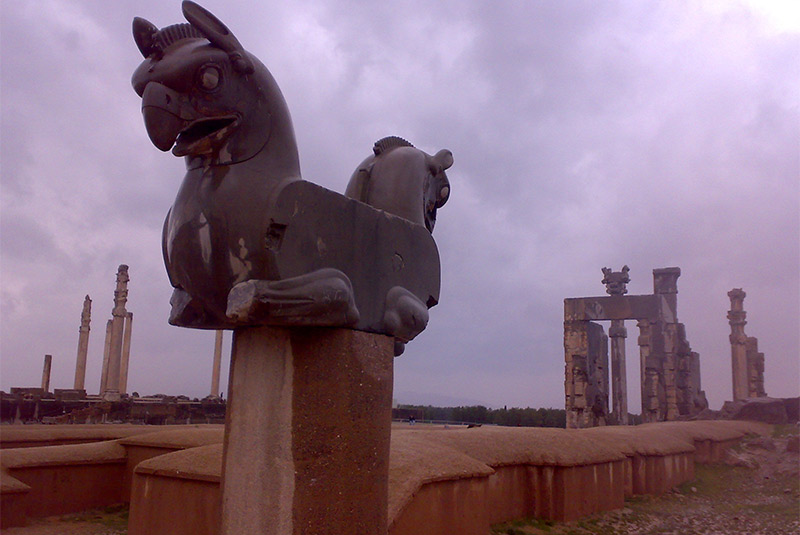
Typically, Persian griffins are shown to have four legs, wings, and a beak. It has eagle talons on its forelegs, an eagle head and neck, and feathers that are typically brown but can sometimes be tawny. Its body is lion-like, and its tail is tufted. It also has large, horse-like ears and feathered eagle wings. The Griffin is depicted as being extraordinarily big and powerful, with talons the size of bull horns and the pens of their feathers huge enough to shoot arrows, in "The Travels of Sir John Mandeville," a purported trip memoir published in the 14th century CE by an unknown author.
Although the Griffin is typically shown as brownish in hue, other authors have described it in various ways. According to the 2nd century CE Greek geographer Pausanias, griffins had leopard-like patches.
Iran Griffin History
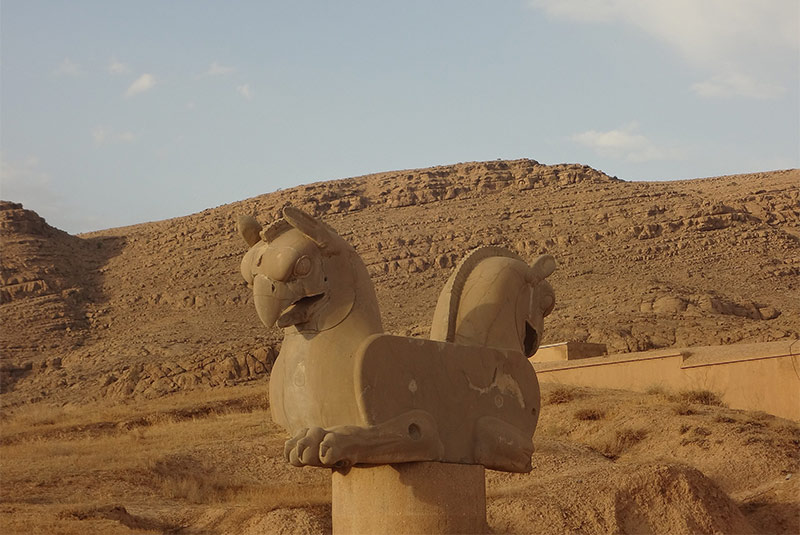
Visual representations of the griffin date back much further than the first written records, which date to the 7th century BCE. A larger Near Eastern tradition of composite animals, including sphinxes, lamassu, the Imdugud, and cherubim, includes depictions of griffins that may be found in ancient Egypt, Mesopotamia, Persia, and the Mediterranean. Although experts disagree on the precise civilization from which the first griffins descended, it is generally accepted that they came from either ancient Egypt or Susa (located in modern-day Iran).
As mentioned, Griffin's origins have given rise to various theories; some claim that it originates with the Scythians (a North Asian people), while others refer to it as the source of Iranian and Indian folklore. Despite frequent depictions of this creature in ancient Greek art, Griffin does not appear prominently in any of the Greek civilization's mythology. However, if we were to determine the precise origin of the Griffin, we would have to claim that, due to the numerous names given to this hybrid species and the fact that it appears in artwork from several countries, including Iran, Asia is probably its place of origin.
The Levant, an area near the Aegean Sea, is where most historians believe the Griffin originated. Around 2000–1001 BCE, it was pretty popular in the area, and by the 14th century BCE, it was well recognized across Western Asia and Greece. The mythical beast, which goes by the spellings griffon and gryphon, was revered as a guardian of valuables and rare items.
It is unclear if the Griffin came from Egypt or Persia. Whatever the case, evidence of the Griffin dating to roughly 3000 BC has been discovered in both places.
Griffin in Persia

Given the prevalence of griffin-like animals in ancient Persian art and architecture, some historians speculate that the Griffin may have originated in Persia. Images of the Persian Griffin, also known as the Shirdal (lion-eagle in Persian), may be seen in palaces and other exciting locations from the Achaemenid Empire in Persia. The fabled being was also revered as a guardian against evil and witchcraft.
Persian Griffin is a bird of Homa that has appeared in some historical eras of Iran. It is revered in Iranian literature and beliefs and is regarded as a symbol of prosperity and happiness. It is said that anyone who comes under the shadow of a griffin will be made happy. During the Sassanid era, griffins were used as textiles and container motifs to represent the wearer's goodness of life. Persian Griffin is sometimes shown in the earliest artwork next to the "Tree of Life." During the Achaemenid period, this creature represented Iranian knowledge and could be trained as a guard to safeguard against demonic powers.
The Paleolithic Era

The Marlik Hills, Lorestan, and the Ziwiyeh region are connected to the patterns discovered at this time. Additionally, works of art from the Amlash Hasanlu region depict a hybrid creature with a bird's head and a four-legged animal's body. Ancient Persian pottery and cylinder seals both include the image of the eagle. Eagles with broad wings are painted on the silk hills of Kashan's Ilam cylindrical seals and jellies. The golden medallion is shown as an eagle with broad wings in the Shusha tiles (dating from the third millennium), as well as in the bronze sculptures by Lorestan, the objects found at Amlash and Marlik, and Hasanlu's golden bowl from the early 2nd century BC. But the copper jar from Marlik Hill has the first known Griffin example in Persian art. The Marlik metal cup's three thousand-year histories begin at the end of the second millennium and the beginning of the first millennium BC. The upper margins of the Golden Cup's four sides are etched with four griffins each. A little piece of golden jewelry set with an eight-centimeter height that was obtained from the Ziwiyeh of Kurdistan and dates to the fifth century BC is another illustration of the Persian Griffin.
Achaemenid Era
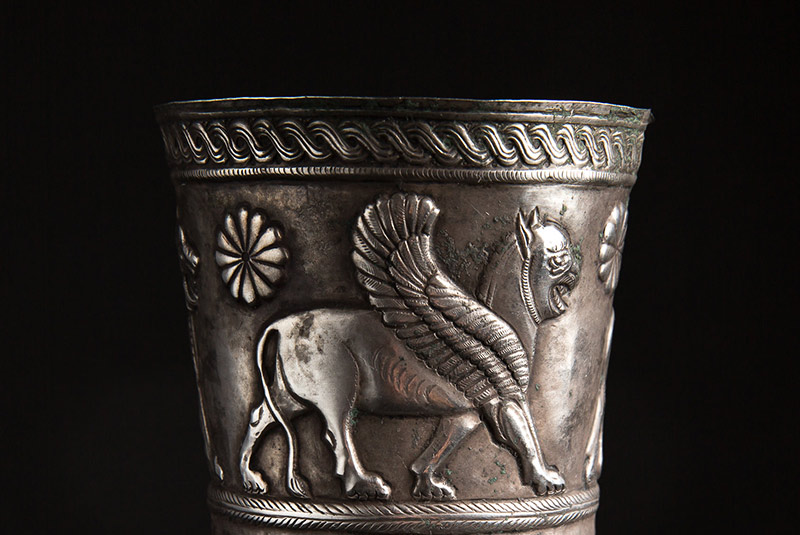
Samples of Persian griffin date back to the Achaemenid era, about 500 BC. The Achaemenid Period gave rise to the artistic representation of these specific beasts, which stands for the most iconic Griffins throughout history. The Persian winged lion of the Achaemenid period ranged in size from big in capitals to little in jewelry. A Persian Griffin design may be seen on the edge of the Pazyryk carpet from the Achaemenid era. It alternately appears in the shape of a winged lion. The horned Griffin that can be seen in Achaemenid jewelry examples is the other sort of Griffin unique to the Achaemenid period and the innovations of the time. The combination of the eagle's head and the lion's hands with the bird's paw has also been added to these gems. When the horn is present, the creature's holiness and respectability are increased by two.
Persian Griffin Statue
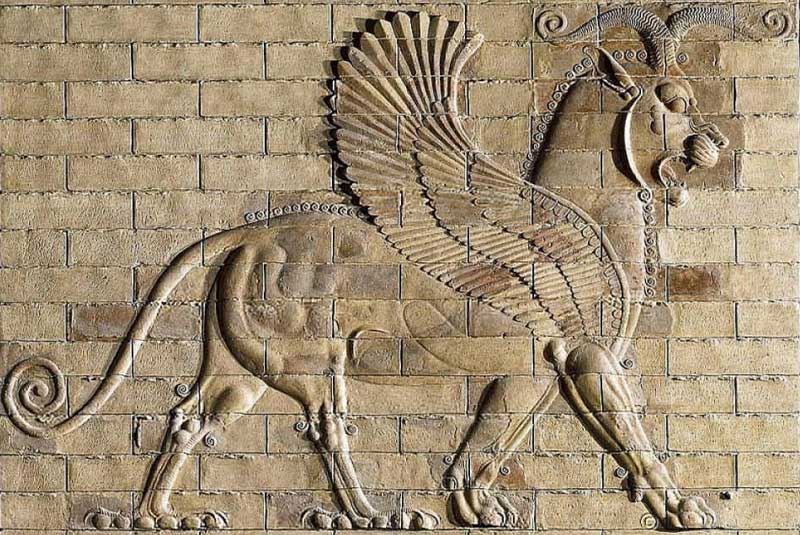
The double Persian Griffin protome capital, an Achaemenid masterwork, is one of Persepolis's remaining capitals that is both spectacular and mysterious. One would think that there would have been more than one of these Persian griffin capitals from before the devastation in 330 BCE, but it appears that just this one is still standing and whole. However, since there aren't any additional Persepolis griffin protome pieces, it's conceivable that just one was carved. Given the "conflagration...and disastrous end" described under Alexander, some archaeological records imply that the setting in which it was erected at Persepolis was from the Apadana. However, this cannot be verified as only 13 of the 36 (arranged 6 × 6) columns have remained.
Sassanid Era
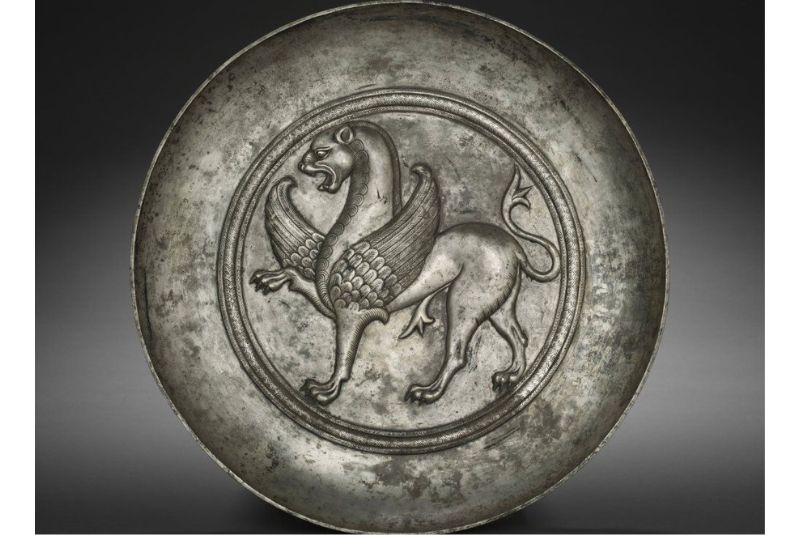
In the Sassanid era, the Eagle symbol had a significant role. Many Sassanian artworks depict the figure of the eagle or only the eagle's wings, but Griffin's former common form was altered to become a bird known as the Sassanid Simorgh. This bird has a lion's body, a dog or lion's head with wings, an eagle's claw, and occasionally a tail made of peacock feathers. This mythical, enormous bird, which is frequently shown in Sassanid artwork composed of metal, stone, and textiles, has been associated with the idea of delivering happiness and goodwill to its possessor. The Sassanid Simorgh appears identical to the Achaemenid Griffin, which shares literary and mythological roots with Pahlavi manuscripts and Iranian and Indian devotional chants.
Griffin in Egypt
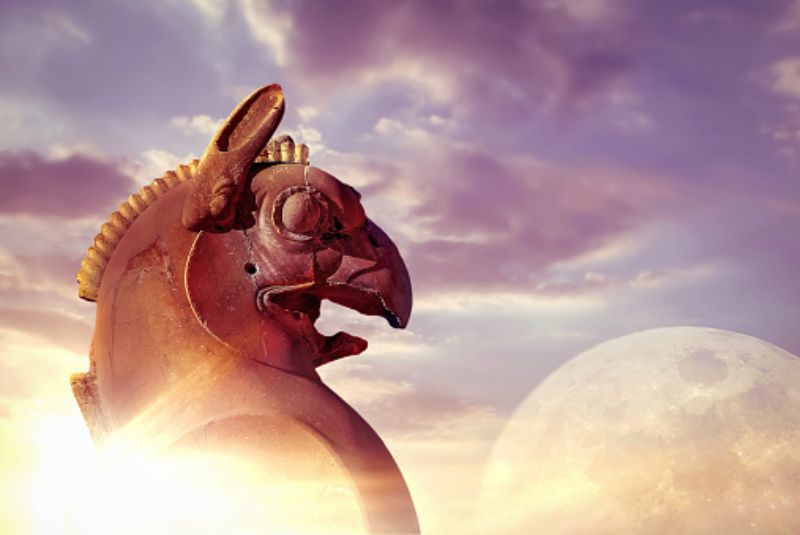
A griffin-like creature was discovered on a palette from Hierakonpolis, Egypt, and was dated to before 3100 BC, according to An Aegean Griffin In Egypt: The Hunt Frieze At Tell El-Dab'a. It was thought to be a depiction of the pharaoh in the Middle Kingdom of Egypt when it was discovered engraved as an apotropaic beast on the pectoral of Sesostris III and ivory blades.
Egyptian griffins are shown as hunters and are said to have falcon-like heads, either with or without wings. It is seen attacking its victim in predynastic art and is also depicted as a mythological beast in the artwork. Griffins had a part in the portrayals of several people, including Axex, and were occasionally shown dragging the chariot of the pharaohs.
Because griffins were frequently shown in ancient Egyptian art with falcon heads rather than eagle heads, they probably had connections to Horus, the falcon-headed God. They are also offered with their wings folded or without wings. Typically, griffins were depicted as crushing humans beneath their hooves. The Griffin was used in these scenes to symbolize the victorious pharaoh overcoming his adversaries and Egypt's foes.
Griffin In Ancient Assyria
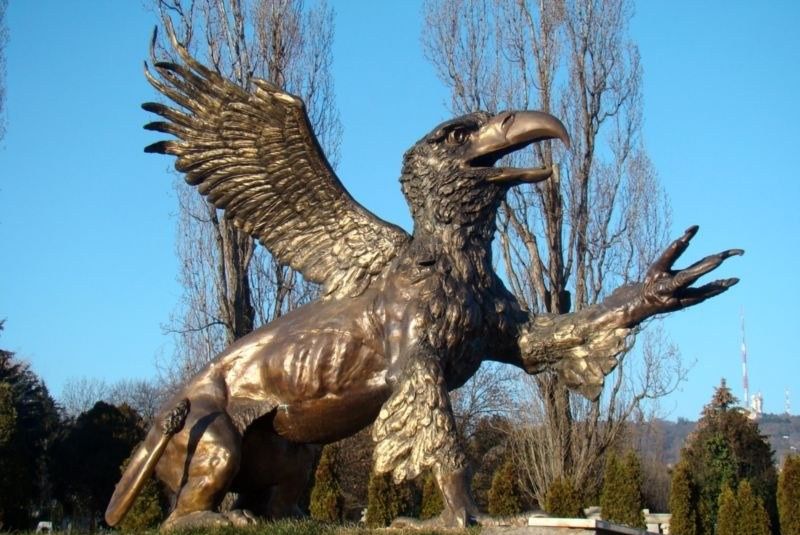
An ivory carving believed to be a furniture tile representing a griffin that dates to the 18th century BCE was discovered within the palace at Acemhöyük, an ancient Assyrian trade town in Anatolia (current-day Turkey). The Assyrian portrayal of a griffin also had a falcon head rather than an eagle head, just like the older Egyptian Griffin. This artefact's griffin theme is said to have influenced subsequent Minoan artists, who used the design to create their own griffin representations.
Griffin In Minoan Civilization

Between 3000 and 1100 BCE, the Bronze Age civilization known as the Minoans flourished on the island of Crete. Greek myths like the Minotaur were set on Minoan-era Crete, and the Minoans significantly impacted subsequent Greek culture. Extensive frescoes from between 1550 and 1450 BCE were discovered at the Minoan palace in Knossos, Crete, which was unearthed around 1900 CE. One of these frescos depicts a griffin without wings. However, there is some debate about these frescos. The frescoes within the palace were recreated by painters under the direction of British archaeologist Arthur Evans, who oversaw the excavation of Knossos. Over the years, the techniques employed have drawn criticism, with some archaeologists alleging that the artists invented details and exercised creative license in their reconstruction.
Griffin In Ancient Greece
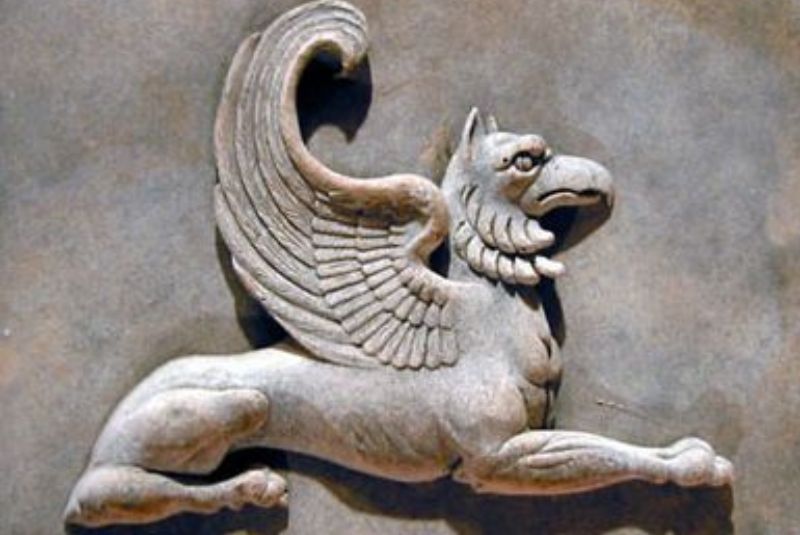
The "Arimaspea," a poem from the 7th century BCE (700-600 BCE), credited to Aristeas of Proconnesus, has the oldest known mention of the Griffin, according to subsequent writers like Herodotus and Pliny the Elder. Sadly, the poem has since been lost to the passage of time. The Arimaspea detailed Aristeas' expeditions to the far north and the stories he had heard from the Issedonians, a tribe from central Asia, about griffins clashing with the Arimaspi, a tribe of cyclopses.
Griffin In Ancient Roman Sources
The Griffin is also mentioned by Roman historians and mythologists who primarily drew on Greek sources.
Griffin Mythology

The Griffin is first mentioned in writing in Greek mythology, where it is known as "The Hounds of Zeus." The mythical realm of Hyperborea, where the sun never set and the deity Apollo spent the winter, was home to the Griffin, according to the Greeks. It was a hilly territory. The Arimaspi, a race of cyclopses who frequently materialized on horseback in an attempt to take Griffin's treasure, was thought to be in perpetual battle with these griffins, who were said to defend hordes of gold from the river of Plutus, the Greek God of wealth. Later, the Griffin was said to have resided in either the highlands of India or Bactria (modern-day Tajikistan, Uzbekistan, and regions of northern Afghanistan).
What Does A Griffin Symbolize?
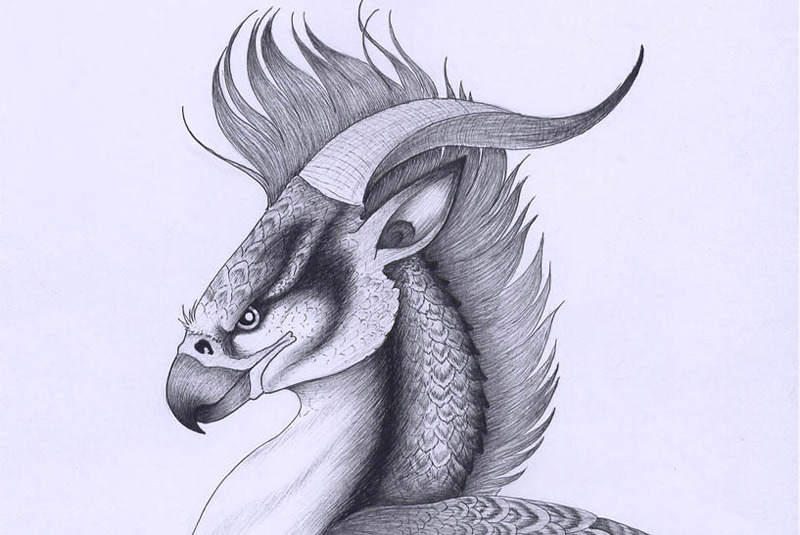
In several civilizations all across the world, griffins have symbolic significance. As previously noted, the Persian Griffin is a remnant of Persian and Egyptian art. The Griffin was a symbol of power and distinction in Egyptian society, and it may be found on expensive cosmetic palettes and decorative signs. The idea that griffins were symbols of power and riches originated in Asian culture and spread to Greece over the legendary Silk Road trading route during the height of Greek culture. This idea originated from the legend that Griffins guarded a treasure trove like a dragon and laid golden eggs.
Although it is more probable that the Griffin was inspired by mythology from several civilizations, it is nevertheless a well-known icon. A Sign of Authority and Power - The Griffin is seen as a hunter or a predator in some civilizations. It gains a perception of power and authority as a result. Having the body of a lion, which is considered the king of the animals, and the head of a falcon—a bird of prey with razor-sharp talons—the Griffin is seen as a muscular beast. The beast was said to be twice as strong when combined.
A Symbol of Prosperity - Because griffins are frequently shown as animals that defend wealth, they eventually came to be associated with prosperity and prominence. A Guardian and Protector - The Griffin was frequently portrayed as the keeper of hidden treasure. People believed it to be a being that was protected by warding off evil and harmful forces.
Griffin Symbol In Modern Ages

The Griffin has endured through the ages and now frequently appears in decorative arts, sculpture, and architecture. Both the monument in the Farkashegyi Cemetery in Budapest and St. Mark's Basilica in Venice feature griffin statues.
The Griffin was ideal for heraldry because of its symbolic meaning and look. The Griffin of Edward III, a heraldic griffin, was one of the ten Queen's Creatures created for the coronation of Queen Elizabeth II in 1953. Additionally, it appears on the coats of arms for Crimea in Ukraine and Greifswald and Mecklenburg-Vorpommern in Germany. The Griffin can also be seen on certain logos, such as those for Vauxhall vehicles.
The Griffin has also appeared in video games and popular culture. Harry Potter, the Percy Jackson books, and the Dungeons & Dragons board game are just a few of them. The Griffin represents strength and power in jewelry designs and a fantastical touch. Medallions, lockets, rings, brooches, and amulets all have images of them. The Griffin is a common tattooed motif as well.
Griffin Claws And Eggs In Medieval Times
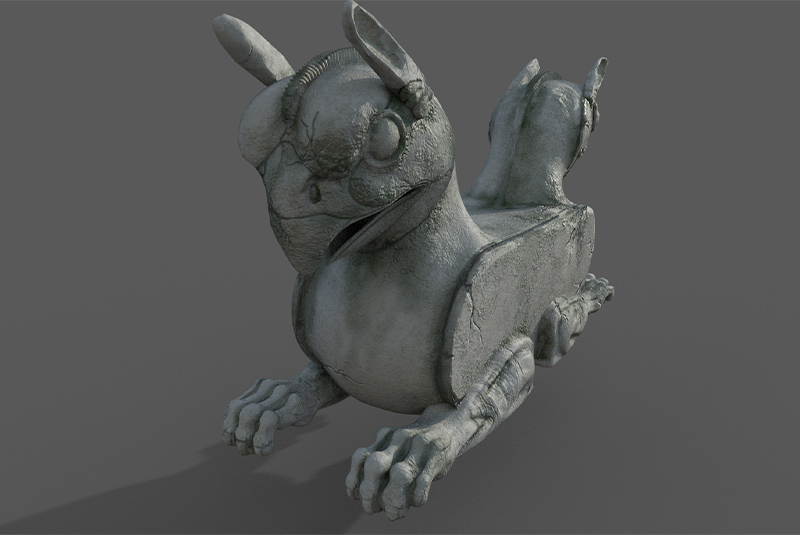
The First Crusade, an effort by European Christians to liberate the Holy Land and Jerusalem from Muslim rule, started in 1095 CE. There were eight crusades, the eighth of which occurred in the 14th century CE. European crusaders travelled at this time and collected oddities from the many countries they encountered. They were sold griffin claws and eggs, among other exceptions, by dealers from the Middle East. Due to these relics, Medieval Europeans came to think that griffins were living things and not only the products of paganism. Such objects were highly prized and believed to possess magical abilities. One of them was the notion that poison might be cured by drinking from a drinking horn constructed from a griffin's claw.
These oddities, however, were all forgeries, including the altered ibex horns marketed as griffin claws that gave rise to the belief that griffins were enormous creatures in Europe and the ostrich (or occasionally even preserved dinosaur) eggs sold as griffin eggs. However, these forgeries were carried back to Europe and shown there. One such instance is the griffin claw that King Henry the Lion of Saxony (1129 or 1131-1195) brought back from the Holy Land and displayed there until 1906 CE at the Brunswick Cathedral in Germany.
The Griffin In Christian Bestiaries Of The Middle Ages
In contrast to what one might anticipate from a modern encyclopedia, descriptions of animals in medieval bestiaries were not realistic or scientific. Instead, they had a theological agenda. Bestiaries were compilations of moral and symbolic tales about beasts, plants, and occasionally even stones that sought to illustrate how everything of nature is a work of God. Despite this, most references to the Griffin that can be found in medieval bestiaries are just Christianized versions of Greek myths.
Griffin In European Culture
The Griffin continued to be prominently depicted in European fine arts, such as tapestries and engravings, but over time it also started to acquire Christian meaning. A griffin's dual nature was frequently compared to Christ's since it could fly through the air as readily as it could walk on land, embodying Christ's divine and human characteristics. Because griffins only had one partner for life and if one died, the other would never mate again, the Griffin came to represent loyalty in English literature. The Griffin is typically depicted in architectural design as a four-legged creature with wings and the head of a leopard, tiger, or eagle.
Griffin In Heraldry
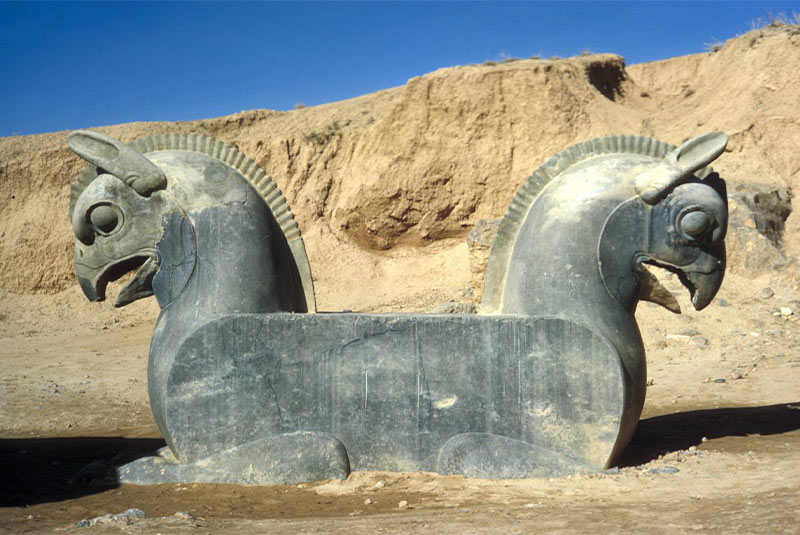
In heraldry, the Griffin is frequently used as a "charge." A heraldic griffin, sometimes known as a gryphon, has the rear parts of a lion, such as the legs and tail, and the upper parts of an eagle, such as the feathered neck, wings, claws, and head with a beak, in addition to ears. The ears differentiate a griffin's head from an eagle's head in heraldry, which is significant since without them, Griffin's head and the eagle's head are frequently shown in heraldry as heads without bodies, would be the same. Given the significance of both the lion and the eagle as heraldic charges, it is probably not unexpected that their hybrid, the Griffin, was also a popular option.
Heraldic griffins are typically depicted rearing up, facing left, and standing on one back leg with the other leg and the claws raised. This posture is referred to in the Norman-French heraldic language as segreant, a term only used to describe griffins, and is the exact equivalent of the characterization of lions and other creatures in heraldry as widespread. One of the 10 Queen's Beasts created for Queen Elizabeth II's 1953 coronation, which were modelled after the King's Animals at Hampton Court, was a heraldic griffin. It is currently on exhibit at Kew Gardens.
The City of London chose what is commonly referred to as a griffin to uphold its coat of arms, and it marks its limits with sculptures of a single "griffin" bearing the City coat of arms at each route heading into the City of London. On the other hand, the City of London griffins are heraldic dragons since they have scaly bodies and wings and lack feathers and an eagle's beak.
Bottom Line
Whatever its original roots, the Griffin has been a part of several civilizations and has retained its significance as a representation of power, strength, and protection. The mythical being is probably going to keep appearing in popular culture and the arts for a very long time.


Comment
Leave a Comment